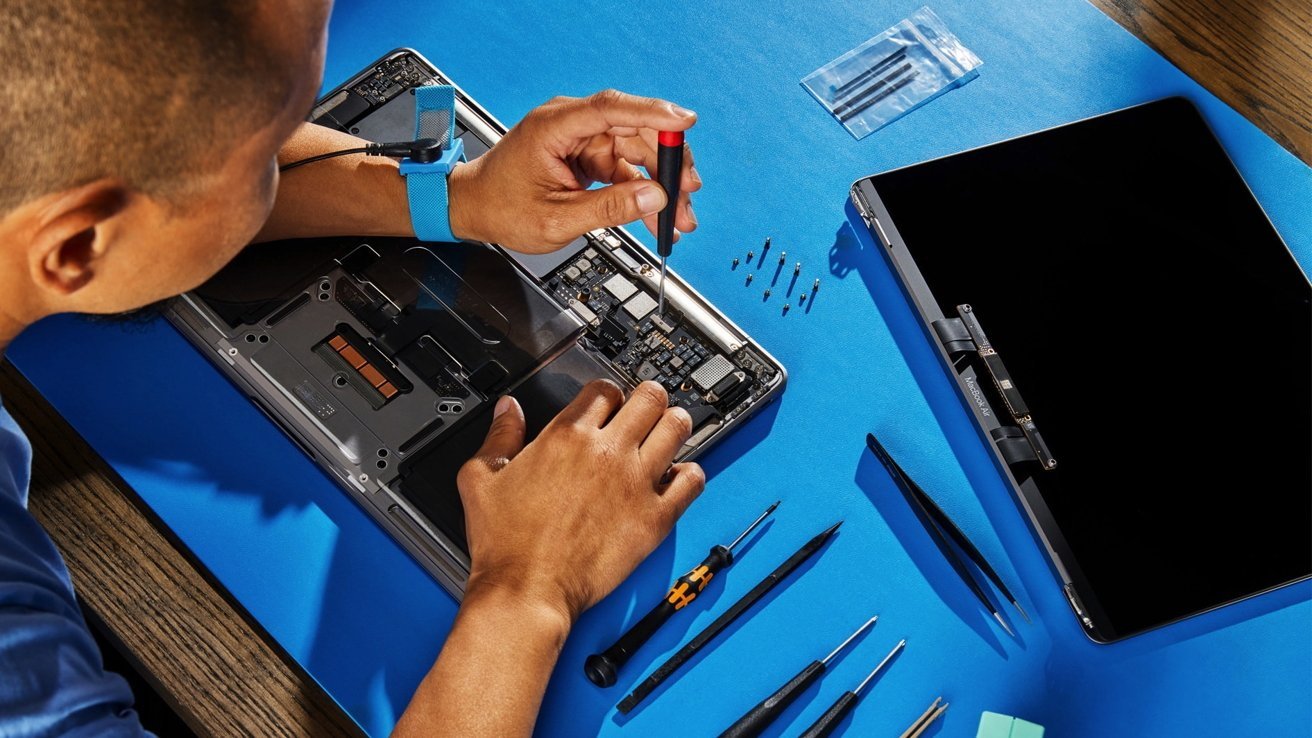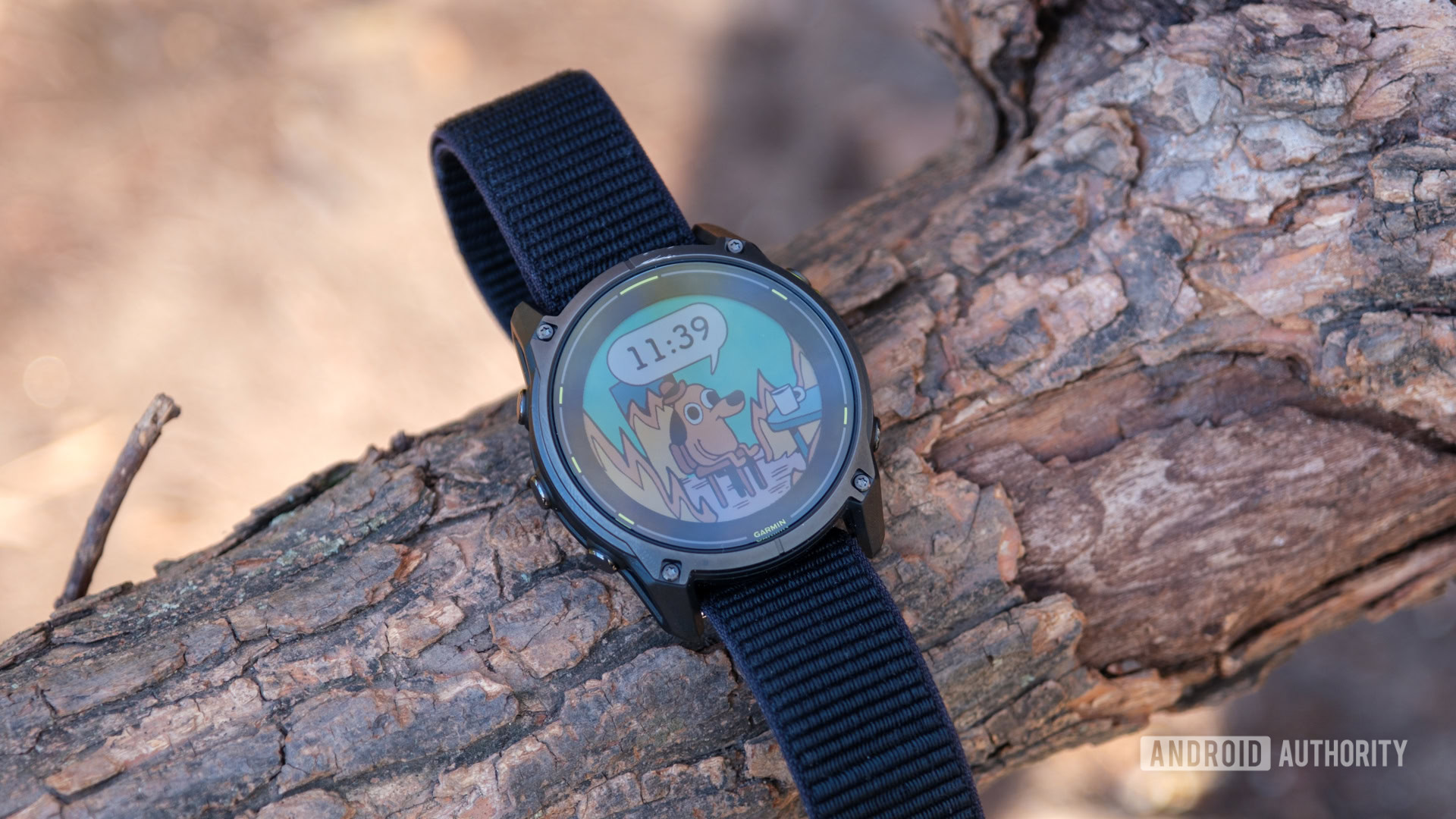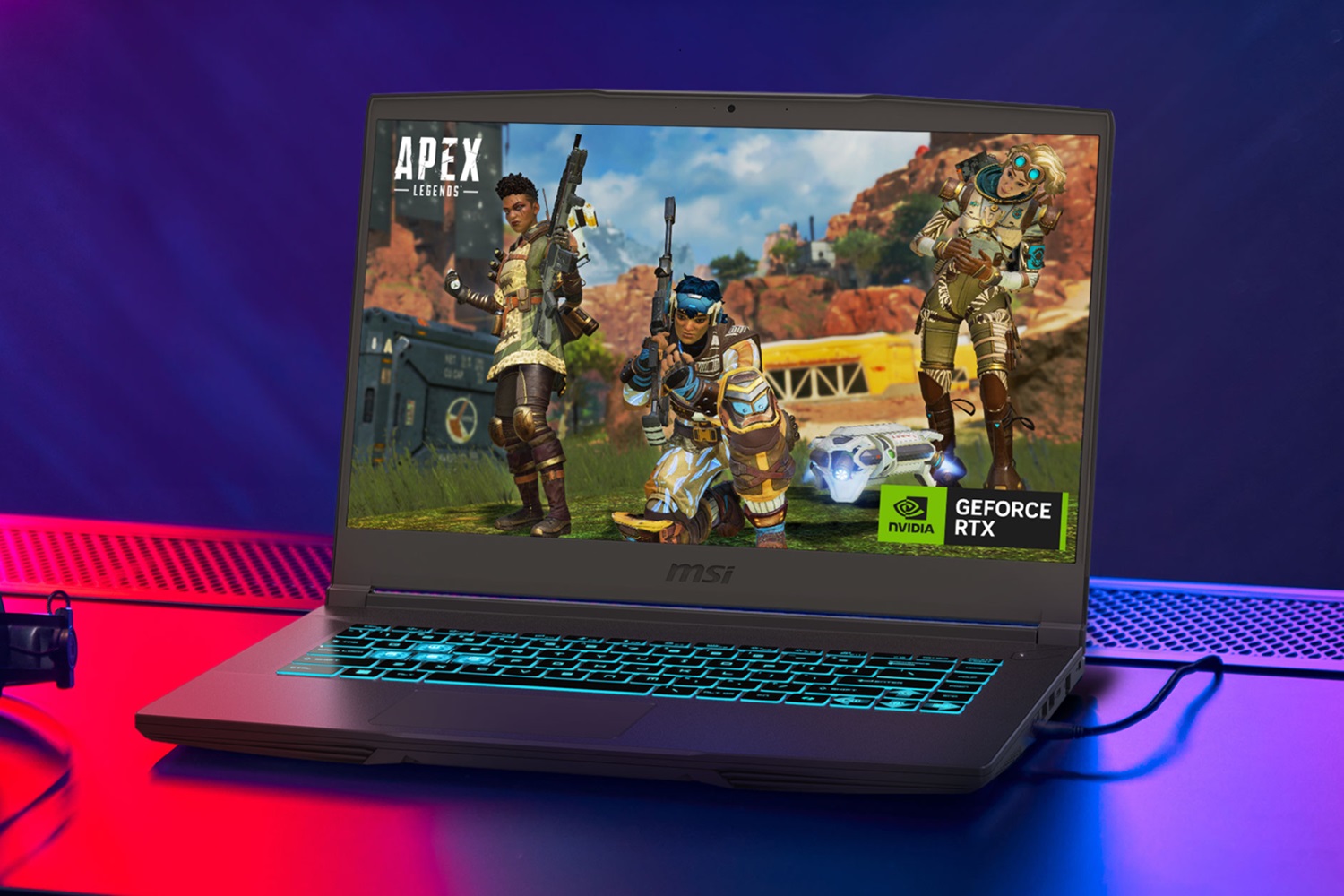We weren’t thrilled by the Intel-powered Lenovo Yoga 7i 2-in-1 Gen 9, and its AMD cousin, the Yoga 7 2-in-1 Gen 9 seen here, is no better. While this 16-inch laptop ($799.99 as tested) features an attractive metal chassis and comfortable input devices, it’s too heavy to take advantage of its convertible design, and its subpar screen and scanty 8GB of memory are serious drawbacks. And though its battery life is decent, it doesn’t stand out. You can find better options for mainstream big-screen productivity, among them the Acer Swift Go 16
Models and Design: Stylish, if Sizable
Lenovo’s Yoga laptops pioneered rotating screens that allow them to flip and fold from laptop to tablet mode, but the feature is more of a novelty than a genuine attraction when you’re dealing with the 16-inch size. At 4.63 pounds, this 2-in-1 is quite an armful, as are its competitors, the 4.4-pound Yoga 7i mentioned above and the 4.8-pound Dell Inspiron 16 2-in-1 (model 7640) now in our review pipeline. By contrast, the non-convertible Acer Swift Go 16 weighs just 3.5 pounds.
(Credit: Joseph Maldonado)
Our Best Buy model 83DM0004US comes with a 1,920-by-1,200-pixel touch screen, an AMD Ryzen 5 8640HS processor with Radeon integrated graphics, 8GB of memory, and a 512GB solid-state drive as well as Windows 11 Home. It was priced at $799.99 at presstime, though I briefly saw it drop to $549.99. The convertible carries a one-year warranty.
Unfortunately, Best Buy units don’t include a digital pen. Lenovo offers the same specifications for $723.60 and throws in a stylus, though not with all configurations—even the top-tier $899.99 model, which has a Ryzen 7 8840HS chip and doubles the RAM and storage to 16GB and 1TB, respectively, doesn’t have it.
The 8GB of RAM in our model is inadequate for serious multitasking (and has been for several years), making the upgraded model your only viable option in our view, since the memory isn’t user-upgradable here. By contrast, the Intel-based Yoga 7i, which was on sale for $599.99 at this writing, offers 16GB of RAM standard.
(Credit: Joseph Maldonado)
The Yoga’s aluminum chassis provides a solid feel and impressive rigidity. The design looks understated but classy, with branding limited to small reflective logos on the lid. A notch at the top houses a somewhat grainy 1080p webcam, which has a sliding privacy shutter and Windows Hello facial-recognition support. A fingerprint sensor in the palm rest is another option for passwordless logins.
Measuring 0.75 by 14.2 by 9.8 inches, the Lenovo is reasonably sized, though there’s no denying this is a big device. The display bezels aren’t ultra-thin, which keeps your thumbs off the screen when holding the device in tablet mode.
(Credit: Joseph Maldonado)
Connectivity is satisfactory, with two USB 3.2 Type-C ports (both usable for charging), an HDMI 2.1 monitor port, a 3.5mm audio jack, two USB 3.2 Type- A ports, and a microSD card reader. Unlike the Yoga 7i, the AMD model has no USB4 ports. The power button is on the right edge. Wireless support includes Wi-Fi 6E and Bluetooth 5.3.
(Credit: Joseph Maldonado)
Using the Yoga 7 2-in-1 Gen 9: Comfortable Everyday Productivity
The 1,920-by-1,200-pixel resolution is just right on the Yoga’s 16-inch diagonal, offering room for viewing two documents side by side without resizing. The panel supports touch and a digital pen (which, as noted, our Best Buy model lacks). Lenovo sells a Digital Pen 2, part number GX81J19850, for $39.99.
(Credit: Joseph Maldonado)
Screen quality is the Yoga’s weakest point, with a picture that surpasses budget laptops but falls short in this tier. Color saturation is only average, though brightness is decent. While I found the darker scenes in The Batman to be slightly washed out, I still enjoyed watching the movie on the roomy screen.
The keyboard, on the other hand, is excellent. I managed 123 words per minute with 98% accuracy in the MonkeyType online typing test, which is close to my personal best. The keys have a solid feel, with sufficient travel distance to be engaging. The two levels of white backlighting can be toggled with a Fn+space bar shortcut. I also enjoyed using the large touchpad, which offers solid, quiet clicking action.
(Credit: Joseph Maldonado)
The Yoga 7’s Dolby Atmos support provides decent sound quality. While I thought the vocal notes in Cyndi Lauper’s “The Goonies ‘R Good Enough” sounded a bit strained, the volume and bass proved satisfactory for personal entertainment. For comparison, this laptop is noticeably louder than my iPhone 15 Pro Max.
An underrated feature of this laptop is the preinstalled Lenovo Vantage app. It offers useful tools such as a battery-charge limiter to reduce wear and an overnight charging mode that smart-charges the battery to full just before you start your day. Additionally, it has a screen color-temperature adjuster to reduce eye strain. Optional touchpad shortcuts can also be enabled for adjusting screen brightness by swiping along the left edge and swiping across the bottom to control volume. In addition, a microphone noise-cancelling feature can be trained to pick up only your voice. The app also handles system updates.
Thermally, the Yoga proved well-behaved in our performance tests. Its single cooling fan was audible but not intrusive. The laptop got warm but not scalding to the touch above the keyboard near the cooling exhaust.
Testing the Yoga 7 2-in-1 Gen 9: Just Enough Oomph
To recap, our Best Buy machine combines a Ryzen 5 8640HS processor (six cores, 4.9GHz turbo), AMD Radeon integrated graphics, a skimpy 8GB of memory, and a 512GB solid-state drive.
Lenovo’s Intel-powered Yoga 7i 2-in-1 Gen 9 ($899.99 as tested) was a natural inclusion for our benchmark comparison charts. We also included the soon-to-be-reviewed Dell Inspiron 16 2-in-1 model 7640 ($799.99 as tested), the non-convertible Acer Swift Go 16 ($899.99 as tested), and a smaller convertible, the Dell Inspiron 14 2-in-1 ($699.99 as tested).
Productivity Tests
We run the same general productivity benchmarks across both mobile and desktop systems. Our first test is UL’s PCMark 10, which simulates a variety of real-world productivity and office workflows to measure overall system performance and also includes a storage subtest for the primary drive.
Three other benchmarks focus on the CPU, using all available cores and threads, to rate a PC’s suitability for processor-intensive workloads. Maxon’s Cinebench R23 uses that company’s Cinema 4D engine to render a complex scene, while Geekbench 5.4 Pro from Primate Labs simulates popular apps ranging from PDF rendering and speech recognition to machine learning. Finally, we use the open-source video transcoder HandBrake 1.4 to convert a 12-minute video clip from 4K to 1080p resolution (lower times are better).
At last, we run PugetBench for Photoshop by workstation maker Puget Systems, which uses the Creative Cloud version 22 of Adobe’s famous image editor to rate a PC’s performance for content creation and multimedia applications. It’s an automated extension that executes a variety of general and GPU-accelerated Photoshop tasks ranging from opening, rotating, resizing, and saving an image to applying masks, gradient fills, and filters.
The Yoga 7 outperformed its Intel counterpart in the main PCMark test but didn’t keep pace with the other units, particularly the Inspiron 16 2-in-1. Its storage performance was average, but it struggled in the CPU tests, and with only 8GB of RAM it was unable to complete our Photoshop benchmark.
Graphics Tests
We test laptops’, desktops’, and tablets’ graphics with two DirectX 12 gaming simulations from UL’s 3DMark, Night Raid (more modest, suitable for laptops with integrated graphics) and Time Spy (more demanding, suitable for gaming rigs with discrete GPUs).
We also run two tests from the cross-platform GPU benchmark GFXBench 5, which stresses both low-level routines like texturing and high-level, game-like image rendering. The 1440p Aztec Ruins and 1080p Car Chase tests, rendered offscreen to accommodate different display resolutions, exercise graphics and compute shaders using the OpenGL programming interface and hardware tessellation respectively. The more frames per second (fps), the better.
The Yoga 7’s AMD Radeon integrated GPU proved superior to the Intel silicon of the Yoga 7i, though the Acer and Inspiron 16 led the way with their up-to-date Intel Arc integrated graphics. Even so, modern gaming on any of these machines isn’t realistic without dialing settings way, way down.
Battery and Display Tests
We test laptop battery life by playing a locally stored 720p video file (the open-source Blender movie Tears of Steel) with display brightness at 50% and audio volume at 100%. We make sure the battery is fully charged before the test, with Wi-Fi and keyboard backlighting turned off.
To gauge display performance, we also use a Datacolor SpyderX Elite monitor calibration sensor and its Windows software to measure a laptop screen’s color saturation—what percentage of the sRGB, Adobe RGB, and DCI-P3 color gamuts or palettes the display can show—and its 50% and peak brightness in nits (candelas per square meter).
The Yoga 7 delivered ample battery life for leaving home without the AC adapter, but its screen brightness at our 50% test setting was quite dim. The Intel Yoga 7i had the best runtime, but it also suffered from low brightness. The Inspiron 16 came close to the AMD Yoga in battery life but with significantly higher brightness.
The Yoga 7’s color reproduction was also poor, failing to cover the sRGB gamut or palette while the 16-inch Dell did that and more.
Verdict: A Big, Confused Convertible
Like other bulky and heavy 16-inch convertibles, the Lenovo Yoga 7 2-in-1 Gen 9 is a niche product. It’s stylish enough and offers decent input devices and battery life, but its screen needs better color coverage and the base model’s 8GB of memory is inadequate. The Intel-based Yoga 7i, which offers 16GB of RAM, Thunderbolt 4 support, and longer battery life for similar money, is a better option. However, we don’t find convertible features compelling on a device of this size. For most people, a non-convertible desktop replacement like the Acer Swift Go 16 or a more portable model such as the Asus Zenbook 14 OLED Touch (UM3406) is a better option.
Lenovo Yoga 7 2-in-1 Gen 9 (16-Inch)
Cons
View
More
The Bottom Line
It’s serviceable as a classic laptop, but Lenovo’s Yoga 7 2-in-1 Gen 9 is too hefty for in-hand tablet use, and it needs a more vibrant screen for enjoying video in one of its standup modes.
Like What You’re Reading?
Sign up for Lab Report to get the latest reviews and top product advice delivered right to your inbox.
This newsletter may contain advertising, deals, or affiliate links. Subscribing to a newsletter indicates your consent to our Terms of Use and Privacy Policy. You may unsubscribe from the newsletters at any time.
About Charles Jefferies
















